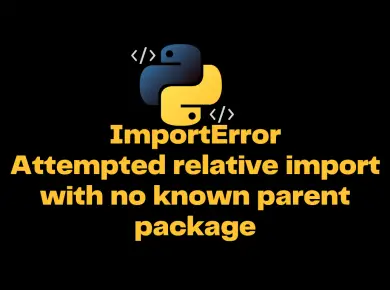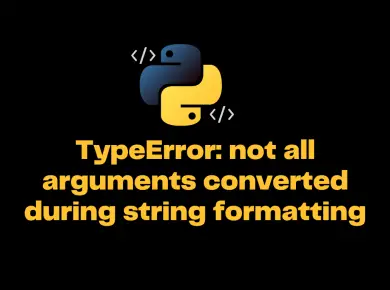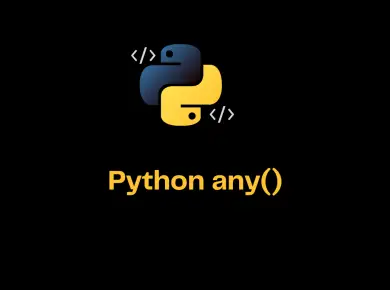In this tutorial, let us look at the most efficient ways to find the last element in list in Python.
What is a List in Python?
The list is one of the most commonly used data types in Python. A list is a collection of elements that can be of any data type. A single list can contain a combination of numbers, strings, nested lists, etc.
How to Get the Last Element of a List in Python
Method 1 – By Iterating all the elements in a list
The most common and straightforward way to get last element in list is through iterating the entire element till it reaches the last element, as shown below.
# Python code to access the last element
# in a list using for loop
# Declaring and initializing list
number_list = [2, 1, 7, 4, 5, 3,6]
print ("List of elements are : " + str(number_list))
# using loop method to print last element
for i in range(0, len(number_list)):
if i == (len(number_list)-1):
print ("The last element of list is : "+ str(number_list[i]))
# Output
List of elements are : [2, 1, 7, 4, 5, 3, 6]
The last element of list is : 6Method 2 – Using the reverse() method
The reverse() method in Python is used to reverse the elements of a list. The reverse() method does not take any arguments and does not return any values instead, it reverses the existing list.
# Python code to access the last element
# in a list using reverse() method
# Declaring and initializing list
number_list = [2, 1, 7, 4, 5, 3,6]
print ("List of elements are : " + str(number_list))
# using reverse method to print last element
number_list.reverse()
print("The last element of list using reverse method are : "
+ str(number_list[0]))
# Output
List of elements are : [2, 1, 7, 4, 5, 3, 6]
The last element of list using reverse method are : 6Method 3 – Using pop() method
The pop() method is used to access the last element of the list and returns the removed item. The pop() method accepts an integer as the argument, which is basically the index of the item which needs to be removed from the list.
Example – list.pop(0) will remove and return the first element in the list.
Note – Calling the pop() method will remove the last item from the list itself. Hence if you are re-using the list, this approach is not recommended as the element is removed.
# Python code to access the last element
# in a list using pop() method
# Declaring and initializing list
number_list = [2, 1, 7, 4, 5, 3,6]
print ("List of elements are : " + str(number_list))
# using pop() method to print last element
print("The last element of list using reverse method are : "
+ str(number_list.pop()))
# Output
List of elements are : [2, 1, 7, 4, 5, 3, 6]
The last element of list using reverse method are : 6Method 4 – Using Negative Indexing [] Operator
The negative index is the way of indexing the element from the end of the list with an index starting from -1, i.e., -1 gives the last element, -2 gives the last 2nd element, and so on.
The major use of negative indexing can be used to reverse a list without using any built-in function.
You can also find the last element in the list using length-1. In order to access the last element, we need to know the length of the list.
# Python code to access the last element
# in a list using negative indexing
# Declaring and initializing list
number_list = [2, 1, 7, 4, 5, 3,6]
print ("List of elements are : " + str(number_list))
# using length-1 to print last element
print("The last element of list using length-1 method are : "
+ str(number_list[len(number_list) -1]))
# using [] operator to print last element
print("The last element of list using reverse method are : "
+ str(number_list[-1]))
# Output
List of elements are : [2, 1, 7, 4, 5, 3, 6]
The last element of list using length-1 method are : 6
The last element of list using reverse method are : 6Method 5 – Using itemgetter()
The operator module in Python has vast features to perform all mathematical, logical, comparison operations.
The itemgetter() method is one of the methods in the operator module, and it accepts one or more integer arguments and returns the callable object.
import operator
# Python code to access the last element
# in a list using itemgetter() method
# Declaring and initializing list
number_list = [2, 1, 7, 4, 5, 3,6]
print ("List of elements are : " + str(number_list))
getLastElement = operator.itemgetter(-1)
# using [] operator to print last element
print("The last element of list using reverse method are : "
+ str(getLastElement(number_list)))
# Output
List of elements are : [2, 1, 7, 4, 5, 3, 6]
The last element of list using reverse method are : 6



![[Solved] Runtimewarning: Invalid Value Encountered In True_Divide 5 Runtimewarning: Invalid Value Encountered In True_Divide](https://itsmycode.com/wp-content/uploads/2022/03/RuntimeWarning-invalid-value-encountered-in-true_divide-390x290.png)

